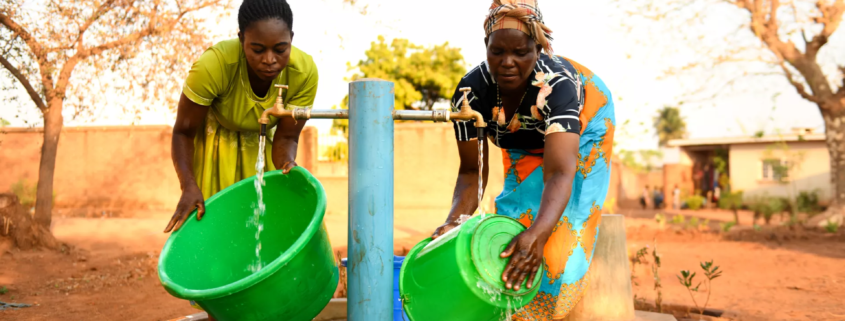Water Availability, Quality And Treatment Methods In Malawi: A Review
Water Availability, Quality And Treatment Methods In Malawi: A Review
Abstract- Water is essential in all aspects of life such as health, economic growth, food production and support for the environment.
Water is scarce mainly in developing countries and pollution of the water resources is a major challenge contributed by the discharge of
wastewater from industries and municipal, agriculture runoff, household wastes and others.
The mainly used water resources in African countries are Lakes, boreholes, rivers, shallow wells, streams and springs.
People consume water from unprotected sources without treatment leading to an outbreak of waterborne diseases.
The water resources recorded high pollution levels with contaminants concentrations above the acceptable limits by the Malawi Bureau of Standards (MBS) and World Health Organization (WHO) for drinking water.
Parameters such as turbidity, Faecal coliforms and bacteria counts in the shallow wells for the sampled and analyzed water recorded a high-value range above the permissible limits for drinking water.
The drinking water treatment methods used are disinfection, filtration and boiling by a large percentage of pollution at the household level.
Total dissolved solids, electrical conductivity and nitrates in the analysis done for the water from the wells and boreholes were within the allowable for drinking water standards.
The TSS in another study analyzed for the drinking water recorded value above the WHO and MBS standards caused by the direct discharge
of the wastewater to water bodies.
The water treatment plants treat surface water and groundwater recorded raw water quality of some of the parameters within the allowable limits with and exemption of Liwonde water treatment plant recorded high turbidity water above drinking water standards.
Water treatment plants also recorded better removal of the pollutants in the water through coagulation, flocculation, sedimentation, filtration and disinfection processes.
The water quality index (WQI) as a key method for regulating water quality for domestic use and the overall effects of quality of water parameters that pose risk to water usage.
The WQI provides valuable information to water resource managers for it is efficiently reliable and useful method for communicating and evaluating the overall quality water information.
In terms of total hardness, the water quality was rated as mild hard to very hard water, while in salinity the water recorded high concentration of total dissolved solids and electric conductivity.
Therefore, this review paper, determined the water resources, water quality, and the treatment techniques for the drinking water, hence a cost-effective, feasible and affordable water treatment method is suggested for the water treatment plant in the treatment of the drinking water.
Index Terms- Drinking water, Water resources, Water treatment, Water Quality Index, Drinking water standards

 AFWASA
AFWASA
 AAEA
AAEA AFWASA
AFWASA
Leave a Reply
Want to join the discussion?Feel free to contribute!